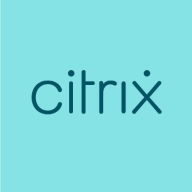


Find out what your peers are saying about Proxmox, VMware, Microsoft and others in Server Virtualization Software.
My clients generally maintain their Citrix infrastructure without shifting, suggesting stability and reliable operation as Citrix XenServer is fully established.
You need only one physical server that can host several virtualized servers within the same physical server instead of having multiple physical servers.
KVM definitely saves costs since it is open-source and does not obligate us to pay for licenses as necessary with other virtualization solutions.
With valid licenses, we can access hotfixes, service packs, knowledge base, self-help tools, diagnostics, downloads, live chat, and phone support.
They do not provide adequate support for midsize businesses.
There appear to be very few engineers at Citrix who understand the problems.
Technical support from Microsoft is excellent, rated ten out of ten.
The technical support for Hyper-V is excellent
The technical support is very good
Paid support is also obtainable from companies like Red Hat for more critical issues.
Familiarity with Linux can enhance its performance and usability.
Hyper V can support over two hundred virtual processors and around 12 TB of memory.
The scalability of Hyper-V is great; I would rate it nine out of ten.
I haven't had any significant issues with Citrix XenServer installations over the last 10-15 years.
Automation is unavailable, and reporting is difficult.
Frequent Windows updates can impact stability compared to VMware ESXi.
Although the product is technically competitive, it is not widely known or used due to poor marketing.
Citrix needs to improve the hypervisor, specifically in security and performance.
We can implement high availability and live migration with pools, along with security and backup to enable role-based access control for safer management.
Hyper-V should ensure the features of VMware are covered within its platform.
Hyper-V could be improved by implementing the same set of features that other tools provide.
In future updates, I would like to see improvements in reporting and a resolution to some security weaknesses.
In comparison to VMware, which offers a more balanced set of management features, KVM could improve in terms of user-friendly tooling.
It is cheaper compared to its competitors.
Organizations save substantial money because competing solutions, such as VMware, cost double or triple.
The pricing and licensing policy of Citrix XenServer is not transparent and quite confusing.
Hyper-V is completely free and requires no licensing fee.
Hyper-V's licensing costs are lower compared to VMware, making it cost-effective for smaller workloads.
Until 2019, Hyper-V was a cost-effective solution because it was available as a free product.
Compared to VMware and Microsoft, KVM offers better pricing and licensing options.
The most valuable feature is transferring and sharing applications that allow users to move files between devices, including smartphones, tablets, and computers without needing USB cables, internet connections, or data usage.
It provides secure access to applications and resources, which is crucial for us and our clients.
It is user-friendly and easy to deploy, making it an attractive option.
It is completely free, which is a significant advantage.
I have seen return on investment with Hyper-V because it is both time-saving and cost-effective.
It offers the stability needed for non-enterprise data centers and has improved over time.
The most valuable feature of KVM is its superior real-time performance, which results in lower latency compared to alternatives like VMware and Microsoft.
| Product | Market Share (%) |
|---|---|
| Hyper-V | 14.8% |
| KVM | 9.6% |
| Citrix XenServer | 4.8% |
| Other | 70.8% |



| Company Size | Count |
|---|---|
| Small Business | 29 |
| Midsize Enterprise | 8 |
| Large Enterprise | 18 |
| Company Size | Count |
|---|---|
| Small Business | 69 |
| Midsize Enterprise | 37 |
| Large Enterprise | 45 |
| Company Size | Count |
|---|---|
| Small Business | 22 |
| Midsize Enterprise | 9 |
| Large Enterprise | 14 |
Citrix XenServer provides virtualization with high availability and robust security, offering seamless VM migration and centralized management through XenCenter. Its expansive compatibility and integration enhance its appeal, particularly for SMBs.
Citrix XenServer is recognized for its user-friendly virtualization capabilities, facilitating dynamic scalability and efficient resource management. It supports a wide range of operating systems and integrates with Citrix solutions for improved operations. Businesses benefit from its affordability and ease of deployment. Despite its strengths, users seek improvements in third-party tool integration, network and backup management, and storage flexibility. High costs, limited Linux support, system complexity, technical support, and hardware compatibility remain challenges. An updated and intuitive interface is in demand for more seamless operations across platforms.
What are the key features of Citrix XenServer?In diverse industries, Citrix XenServer is leveraged for server and desktop virtualization, cloud automation, and infrastructure management. Many deploy it for virtual desktop infrastructure, application delivery, on-premises data centers, and to support Citrix application delivery like XenApp and XenDesktop. Enterprises migrating from VMware often find Citrix XenServer cost-efficient for these applications, serving as a main computing platform for enterprise applications including ERP systems and SQL Servers.
Hyper-V is a hardware virtualization tool that allows users to create virtual computer environments with multiple operating systems on a single physical server. Each virtual machine has computer parts, such as memory, processor, storage, and networking, and acts like a standard computer - running its own operating system and software programs. Each component of the virtual machine can be configured to meet your specific requirements.
Hyper-V creates a cost-effective, stable, and productive server virtualization environment by running multiple operating systems, such as Windows, Linux, and more, in parallel on one machine or server. Each virtual machine runs in its own isolated space, which means you can run many virtual machines simultaneously but independently of each other. This helps prevent problems such as a crash affecting the other workloads and enables different users to separately access various systems.
Benefits of Hyper-V
Hyper-V key features:.
Reviews from Real Users
Hyper-V stands out among its competitors for a number of reasons. Several major ones are its flexibility, its replication capabilities, and the fact that its virtual machines utilize a small amount of resources..
Liam L., the owner of a tech services company, writes, “It is actually very low on resources. It doesn't use many resources. It is also very easy to tailor. You can change things like the amount of memory and storage on the fly. It is very stable and reliable. I like its replication feature, which is very good. It is also very easy to move the virtual machines across push servers without any difficulty. Its performance is also very good. Now with this pandemic, a lot of workers are working from home. A lot of workers have been using laptops as their desktop computers, and they would remote into a virtual PC. There is no difficulty, and they can't tell the difference between this and the real one. It is much easier to manage.”
Kevin E. an IT director at Homeland Technology Group, LLC, notes, “We've probably seen a 50 percent speed increase on our SQL server. Hyper-V has also significantly reduced our downtimes with faster boot-up and reboot. If we have to reboot a server, there is maybe two or three minutes of downtime. When we were on a bare-metal server, it could be five to ten minutes due to the total boot time.”
KVM stands for Kernel-based Virtual Machine, which is an open-source virtualization technology that is embedded in Linux. KVM allows users to seamlessly transform their Linux system into a hypervisor that, in turn, will enable a host machine to run numerous, isolated virtual environments or virtual machines (VMs).
KVM is part of Linux. Users with Linux 2.6.20 or newer already have KVM. As KVM is already a component of the current Linux code, it automatically improves with every new Linux fix, feature, or upgrade. So KVM users are always current and up to date.
KVM automatically transforms Linux to a type -1 (bare-metal) hypervisor. All hypervisors need operating system components, such as a process scheduler, I/O stack, device drivers, memory manager, and more, to run a VM. KVM already has these components embedded, as it is part of the Linux kernel. Each VM is generated as a basic Linux proces,s which is maintained by the standard Linux scheduler, with dedicated hardware such as a graphics adapter, memory, disks, network card, and CPUs.
KVM Key Features:
KVM has many valuable key features. Some of its most useful features include:
Reviews from Real Users
“The most helpful aspect of KVM is the fact that the interface is so minimal. It includes just what you need to set up the VMs and manage them, and it's very simple to do so. KVM, as a native virtualization solution, is a complete and fully adequate system for small businesses that need to reduce costs, and also to make maintenance easier. “ - Georges E., Business Engineer and Consultant at All-Tech
“The most valuable feature of KVM is the hypervisor environment and how we can configure it with ease. Additionally, the interface is intuitive.” Sonu S., Senior Solution Architect at Micro Focus